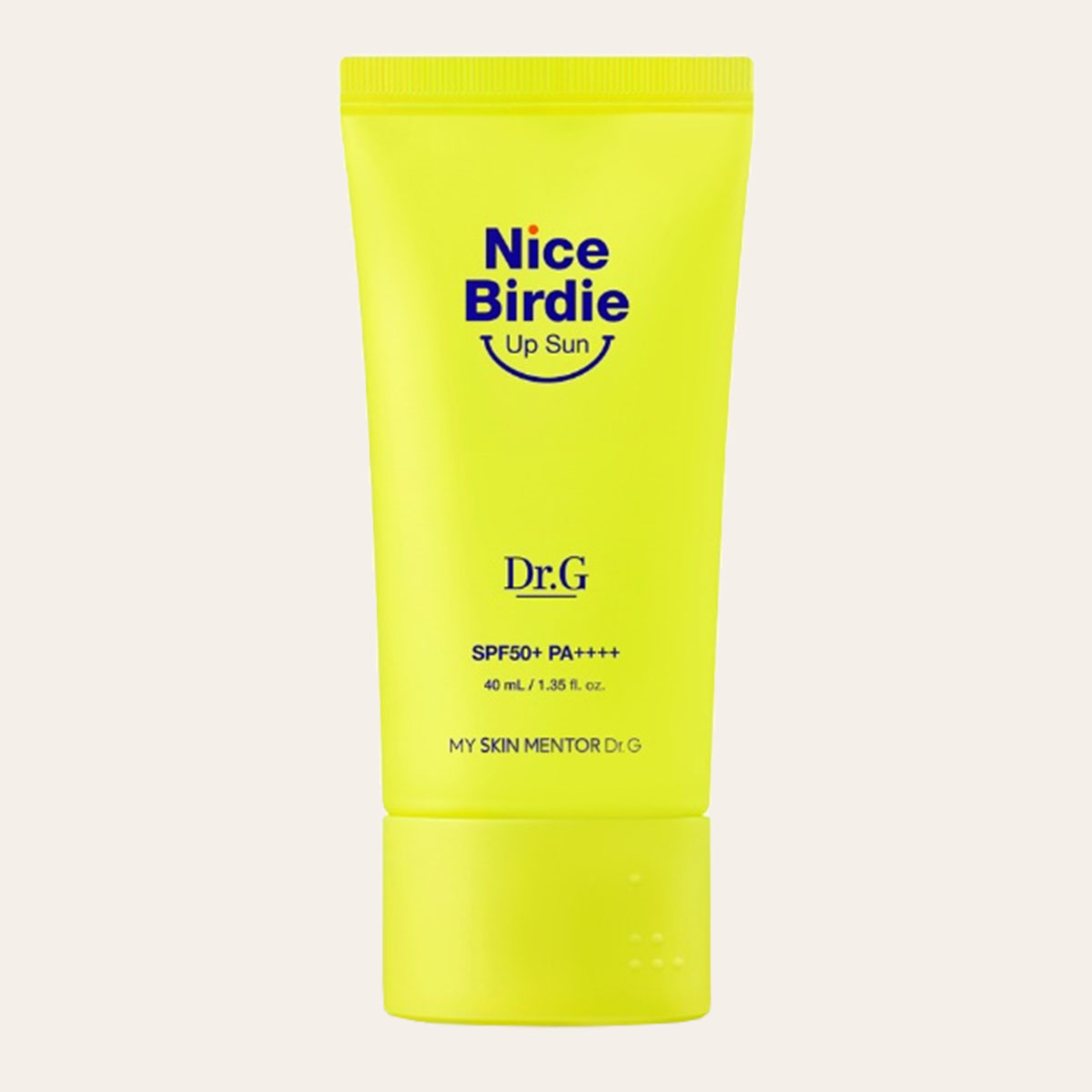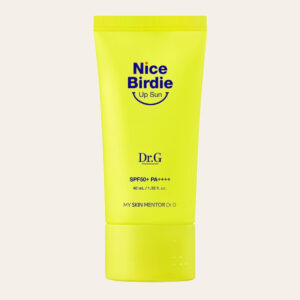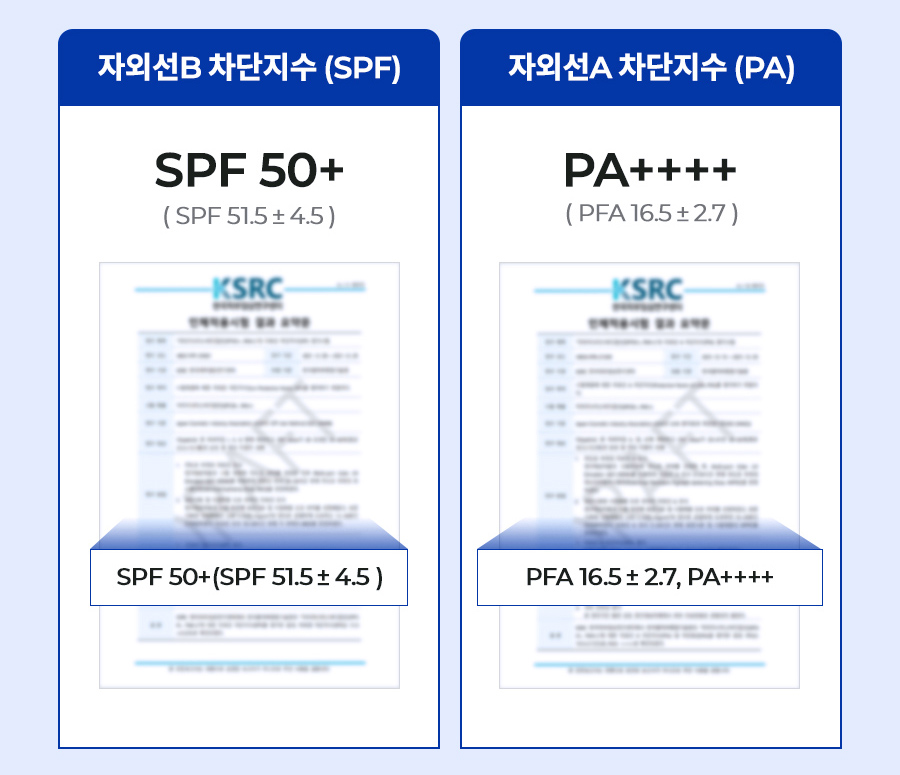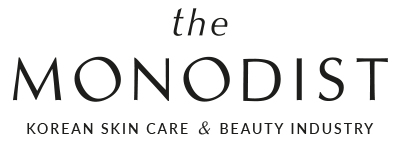
Dr.G – Nice Birdie Up Sun SPF50+/PA++++

Product Info:
Brand: Dr.G
Product Name: Nice Birdie Up Sun
Protection: SPF50+/PA++++
Water Resistance: n/a
Capacity: 40ml
Formulated by: Kolmar Korea
Manufactured by: Kolmar Korea
Distributed by: Gowoonsesang Cosmetics
Country of Manufacture: South Korea
Functional Cosmetic Certifications: Triple-Functional Cosmetic (UV Protection, Whitening, Anti-Wrinkle)
Original Retail Price: 26,000 KRW
Date of Release: February 2022
Shelf life: 36 months before opening. 12 months after opening
Ingredients:
Sunscreen type: Hybrid (organic + inorganic filters)
UV Filters: Zinc Oxide, Diethylamino Hydroxybenzoyl Hexyl Benzoate, Bis-Ethylhexyloxyphenol Methoxyphenyl Triazine, Ethylhexyl Triazone, Titanium Dioxide
Notable allergens: n/a
Water, Zinc Oxide, Propylheptyl Caprylate, Dibutyl Adipate, Dipropylene Glycol, Cyclohexasiloxane, Methyl Trimethicone, Caprylyl Methicone, Polyglyceryl-5 Polyricinoleate, Niacinamide, Methyl Methacrylate Crosspolymer, Polyglyceryl-3 Polydimethylsiloxyethyl Dimethicone, Polymethylsilsesquioxane, Disteardimonium Hectorite, Diethylamino Hydroxybenzoyl Hexyl Benzoate, Bis-Ethylhexyloxyphenol Methoxyphenyl Triazine, Ethylhexyl Triazone, Titanium Dioxide, Magnesium Sulfate, Triethoxycaprylylsilane, 1,2-Hexanediol, Calcium Aluminum Borosilicate, Polypropylsilsesquioxane, Glyceryl Caprylate, Caprylyl Glycol, Jojoba Esters, Ethylhexylglycerin, Adenosine, Octyldodecanol, Helianthus Annuus (Sunflower) Seed Wax, Sodium Hyaluronate, Tocopherol, Polyglycerin-3, Acacia Decurrens Flower Wax, Propanediol, Hydrogenated Lecithin, Polyglyceryl-10 Laurate, Glycolipids, Ceramide NP, Hydroxystearic Acid, Oryza Sativa (Rice) Bran Oil, Glycosphingolipids, Glycine Soja (Soybean) Sterols, 7-Dehydrocholesterol, Ethyl Ascorbyl Ether, Ectoin, Caprylic/Capric Triglyceride, Hippophae Rhamnoides Water, Butylene Glycol, Simmondsia Chinensis (Jojoba) Seed Oil, Caesalpinia Spinosa Fruit Extract, Methylpropanediol, Kappaphycus Alvarezii Extract, Squalane, Lactobacillus Ferment, Buddleja Officinalis Flower Extract, Solanum Lycopersicum (Tomato) Fruit Extract, Laminaria Ochroleuca Extract, Pinus Pinaster Bark Extract, Oenothera Laciniata Extract, Ulmus Davidiana Root Extract, Pinus Palustris Leaf Extract, Pueraria Lobata Root Extract, Backhousia Citriodora Leaf Extract
정제수, 징크옥사이드, 프로필헵틸카프릴레이트, 다이부틸아디페이트, 다이프로필렌글라이콜, 사이클로헥사실록세인, 메틸트라이메티콘, 카프릴릴메티콘, 폴리글리세릴-5폴리리시놀리에이트, 나이아신아마이드, 메틸메타크릴레이트크로스폴리머, 폴리글리세릴-3폴리다이메틸실록시에틸다이메티콘, 폴리메틸실세스퀴옥세인, 다이스테아다이모늄헥토라이트, 디에칠아미노하이드록시벤조일헥실벤조에이트, 비스-에칠헥실옥시페놀메톡시페닐트리아진, 에칠헥실트리아존, 티타늄디옥사이드, 마그네슘설페이트, 트라이에톡시카프릴릴실레인, 1,2-헥산다이올, 칼슘알루미늄보로실리케이트, 폴리프로필실세스퀴옥세인, 글리세릴카프릴레이트, 카프릴릴글라이콜, 호호바에스터, 에틸헥실글리세린, 아데노신, 옥틸도데칸올, 해바라기씨왁스, 소듐하이알루로네이트, 토코페롤, 폴리글리세린-3, 그린와틀꽃왁스, 프로판다이올, 하이드로제네이티드레시틴, 폴리글리세릴-10라우레이트, 글라이코리피드, 세라마이드엔피, 하이드록시스테아릭애씨드, 쌀겨오일, 글라이코스핑고리피드, 돌콩스테롤, 7-데하이드로콜레스테롤, 에칠아스코빌에텔, 엑토인, 카프릴릭/카프릭트라이글리세라이드, 비타민나무수, 부틸렌글라이콜, 호호바씨오일, 타라열매추출물, 메틸프로판다이올, 코토니추출물, 스쿠알란, 락토바실러스발효물, 밀몽화꽃추출물, 토마토추출물, 라미나리아 오크롤레우카추출물, 프랑스해안송껍질추출물, 달맞이꽃추출물, 당느릅나무뿌리추출물, 대왕송잎추출물, 칡뿌리추출물, 레몬머틀잎추출물
Product Description:
A long-lasting sunscreen that blocks UV rays, sweat, oil and even sand up to the 18th hole without crumbling.
“Nice Birdie Up Sun” protects skin from sunlight and dust under prolonged sun exposure on a sport field or during outdoor activities like mountain climbing or running (in-vivo test for UV protection resistance against sweat, outdoor activities and sand conducted by KC Skin Research Center on 20 adults aged 19-60 from 15 November to 16 November 2021. Survey results above average).
The sunscreen doesn’t break down even when it comes in contact with sweat and oil, so it won’t smudge easily. The formula repels oil and sweat and it doesn’t leave any stain on hats or clothes, allowing users to nicely enjoy outdoor activities. Water Shield Powder acts as a waterproof coating when it comes in contact with oil or sweat.
“Nice Birdie Up Sun” applies without stickiness on hands and body. It was formulated with a Sebum Control Complex which regulates sebum production and maintains a matte finish. Sebum Control Complex is composed of Pinus Palustris Leaf Extract + Ulmus Davidiana Root Extract + Oenothera Biennis (Evening Primrose) Flower Extract + Pueraria Lobata Root Extract.
The sunscreen was tested to be suitable for sensitive skin:
- In-vivo skin irritation test conducted by KC Skin Research Center on 33 adults aged 19-59 from 10 November to 12 November 2021.
- In-vivo test for sensitive skin suitability conducted by P&K Skin Research Center on 30 adults aged 20-55 from 10 November to 18 November 2021.
Dr.G privately commissioned tests to verify the UV protection of the sunscreen and obtained the certifications below. Please note that these tests were privately commissioned by the company and are not legally equivalent to the pre-market tests required to commercialise a sunscreen in South Korea. For more information on sunscreen regulations in South Korea, please refer to this video.

Directions:
At the last step of your skin care routine, take an adequate amount and apply it evenly across areas of the skin exposed to UV rays.
Precautions:
Please consult a specialist if there are any abnormal symptoms or side effects such as red spots, swelling or itching when using the cosmetic or after use. Keep away from children. Store away from direct sunlight. For external use only. Do not use on wounds or if you are allergic to any ingredients of this product. Do not stay too long in the sun, even while using a sunscreen product.
Other editions and formulations:
n/a
Shop this product:
Make sure to check out the Discount & Coupons page to access exclusive offers for major Korean skincare retailers.
Reviewed by Odile?
Source: Dr.G website
Translation: © 2022 Odile Monod
Disclaimer: The list above contains a combination of affiliate and non-affiliate links. If you make a purchase through one of my affiliate links, I will earn a small commission (paid by third party companies, not you). Commissions help fund the content production of the Monodist. For more information on my affiliate policy please refer to my About page. Some links are missing because the item is not available outside of Korea at the moment.
